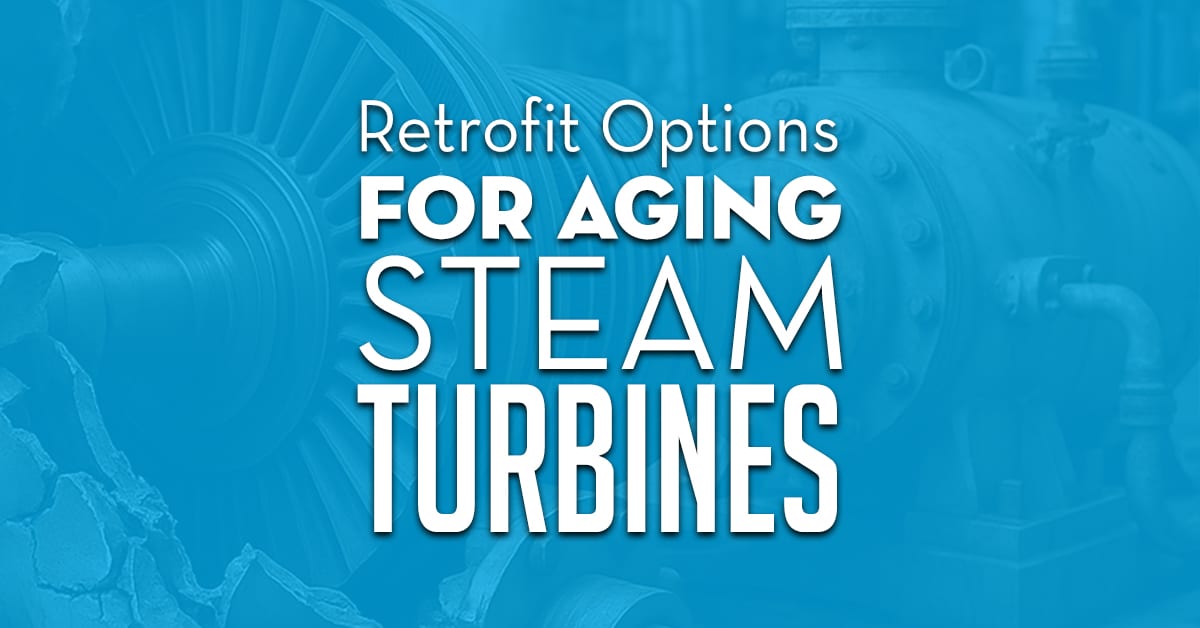The United States is grappling with a significant challenge in power generation. Over 1,300 power plants across the nation are at least 30 years old. These facilities are the backbone of our aging fleet, yet they face stiff competition in today’s deregulated energy markets.
Electric utilities now face tough choices about their turbine systems. Complete replacement costs millions of dollars and takes years to complete. Yet, upgrading existing equipment offers a smarter path forward.
At Allied Power Group, headquartered in Houston, Texas, we specialize in providing Steam Turbine solutions for the power industry. We understand that modern retrofit upgrades can transform older installations. Our expertise helps facilities improve efficiency while extending equipment life under current operating conditions.
Today’s competitive landscape demands strategic thinking. Power systems must deliver reliable performance to maintain grid stability. We believe that targeted improvements to existing steam equipment represent the most cost-effective approach for most facilities.
Key Takeaways
- Over 1,300 U.S. power plants are at least 30 years old and need modernization
- Upgrading existing equipment costs significantly less than complete replacement
- Modern improvements can extend turbine life by decades while boosting efficiency
- Deregulated markets require utilities to optimize older facilities for competitiveness
- Strategic upgrades help maintain grid reliability and operational performance
- Professional expertise is essential for successful turbine system modernization
Why Steam Turbine Retrofitting is Essential for Power Generation
The power generation sector increasingly views retrofitting as a critical strategy to maintain competitive efficiency. As steam turbines age, their performance naturally wanes, posing significant hurdles for operators. We recognize the importance of addressing these challenges through strategic retrofitting, which offers substantial long-term benefits.
Efficiency losses in steam turbines can range from 2 percent to 5 percent over their lifespan. These losses depend on operational hours and maintenance quality. By retrofitting with advanced blades, we can achieve higher efficiencies. At Allied Power Group, we specialize in identifying performance issues and providing cost-effective retrofit solutions. These solutions extend equipment life and enhance operational efficiency.
Identifying Performance Degradation in Aging Steam Turbines
Early detection of turbine reliability issues is key to preventing costly failures. We identify several critical indicators of declining performance and reliability in aging steam turbines.
One obvious sign is reduced power output. Turbines experiencing wear show a decrease in electricity generation capacity. This reduction directly affects revenue and plant profitability.
Increased steam consumption is another indicator of internal inefficiencies. When steam pressure drops or exhaust steam temperatures rise, turbines require more process steam. These changes signal the need for component attention.
Rising operational costs often accompany performance decline. Facilities face higher fuel consumption, increased maintenance, and more downtime. We assist operators in tracking these cost increases to justify retrofit investments.
Cost-Effective Benefits of Retrofitting Over Replacement
Retrofitting is the best option for facilities aiming to optimize performance while managing capital. Complete turbine replacement involves significant upfront costs and extended outage periods, severely impacting operations.
Our retrofit approach offers substantial financial benefits over new equipment installation. Retrofit projects cost 30-50% less and achieve comparable performance improvements. They also have shorter implementation timelines, reducing production losses.
Strategic retrofitting can even surpass original turbine specifications through modern technology integration. Advanced blade designs, improved sealing systems, and digital control upgrades reduce steam consumption and enhance power generation efficiency.
The return on investment for well-planned retrofit projects often surpasses new equipment installations. Facilities can achieve payback periods of 2-4 years through reduced operational costs, improved efficiency, and enhanced turbine reliability. This financial performance makes retrofitting an attractive option for budget-conscious operators.
Retrofit Options for Aging Steam Turbines
Effective turbine retrofitting demands a detailed strategy for upgrading key turbomachinery parts. Our team offers thorough retrofit solutions focusing on three critical areas of steam turbine performance. These upgrades help power plants extend equipment life and boost operational efficiency.
Our engineers assess each turbine’s specific needs to suggest the most cost-effective retrofit technologies. Modern computer systems enable manufacturers to design advanced components that fit seamlessly with existing infrastructure. This approach maximizes ROI while minimizing downtime.
Steam Path and Blading Technology Upgrades
Advanced blading technology is the most impactful retrofit for aging steam turbines. Modern turbine blades, designed with cutting-edge computer modeling, can be easily retrofitted into existing casings. These upgrades typically enhance turbine efficiency by 8 to 10 percent and cut maintenance needs.
The focus on steam path optimization is mainly on the LP section, where efficiency gains are greatest. New materials in rotors, casings, and discs offer better corrosion resistance than originals. Improved rotor designs, using advanced metallurgy, significantly extend operational life.
First and last stage blading get special attention in retrofit projects. Optimized nozzle profiles and redesigned sidewall contours improve flow path characteristics. These changes reduce pressure losses and enhance steam flow distribution across the turbine.
Outer casing modifications often accompany blading upgrades to fit new blade geometries. Inner casing components may need redesign for better steam path efficiency. Stationary blade rows benefit from advanced aerodynamic profiles that complement rotating blade improvements.
Control Systems and Digital Modernization
Digital modernization transforms old mechanical governors and hydraulic controls into advanced electronic systems. Modern control systems eliminate frequent trips during startup and load changes. These upgrades enable automatic start-up sequences, reducing operator workload and improving reliability.
Updated speed sensing technology offers more accurate turbine monitoring and control. Advanced actuators respond faster to load changes and process upsets than traditional hydraulic systems. High-speed digital controls meet current API standards while providing enhanced diagnostic capabilities.
The modernization process includes upgrading human-machine interfaces for better operator interaction. Digital control systems provide real-time performance monitoring and predictive maintenance alerts. These features help operators optimize turbine performance and prevent unexpected failures.
Integration with plant-wide control systems is possible through modern communication protocols. Remote monitoring allows for off-site performance analysis and troubleshooting. This connectivity boosts overall plant efficiency and cuts maintenance costs.
Mechanical Component Retrofits
Mechanical component upgrades address wear and corrosion issues that develop over decades. Bearing systems benefit from modern materials and improved lubrication designs, extending service intervals. Advanced sealing systems, developed over the past decade, significantly reduce steam leakage.
Rotor shaft modifications include balancing improvements and surface treatments for enhanced durability. Stress corrosion issues in LP turbine discs receive special attention during mechanical retrofits. New disc materials and manufacturing techniques eliminate many historical failure modes.
Seal upgrades are critical mechanical improvements that directly impact turbine efficiency. Modern seal designs reduce both internal and external steam leakage while requiring less maintenance. These improvements significantly contribute to overall turbine performance gains.
The intermediate pressure section often requires specific mechanical upgrades to address unique operating conditions. Casing modifications may be necessary to accommodate upgraded mechanical components. Our engineering expertise ensures that all mechanical retrofits integrate properly with existing turbine systems.
We evaluate each turbine’s mechanical condition to prioritize the most beneficial component upgrades. This systematic approach ensures that retrofit investments deliver maximum performance improvements. Our solutions address all aspects of turbine mechanical systems for optimal long-term reliability.
Allied Power Group’s Comprehensive Retrofit Solutions
At Allied Power Group, we offer a detailed approach to steam turbine retrofitting. We combine advanced engineering with proven strategies for implementation. Our solutions transform aging equipment into high-performance assets, fitting within your existing base frame or foundation. We address every aspect of modernization, from initial assessment to long-term operational support.
Our retrofit solutions significantly increase steam turbine output while maintaining reliability. We’ve successfully increased output by 42 MW or more, showing our ability to enhance performance. These upgrades adapt equipment to new parameters without requiring full replacement.
Our Houston-Based Engineering Expertise
Our Houston headquarters gives us access to the world’s largest energy industry expertise. This location allows us to leverage decades of experience in steam turbine technology and project management. Our team knows equipment from various manufacturers, including Siemens Energy.
We specialize in older installations that need specialized knowledge of legacy systems. Our engineers tackle challenges like stress corrosion and corrosion. This expertise helps us extend equipment life and improve efficiency.
Our team handles system integration, including oil system and computer systems upgrades. We understand retrofitting equipment under different standards. This ensures our projects deliver optimal results and fit with existing infrastructure.
Implementation and Long-Term Support
Our implementation process minimizes downtime and maximizes efficiency. We’ve completed major retrofit installations in 36-42 days, reducing plant operation impact. Our rapid implementation comes from detailed project planning and experienced teams.
We manage projects from initial assessment to startup and commissioning. Our approach includes detailed coordination with plant operators for seamless integration. We handle all implementation aspects, including equipment modifications and system testing.
| Retrofit Phase | Duration | Key Activities | Expected Outcomes |
|---|---|---|---|
| Assessment & Planning | 4-6 weeks | Performance analysis, design development, procurement planning | Detailed retrofit specifications and timeline |
| Installation | 36-42 days | Component replacement, system integration, testing | Upgraded equipment ready for commissioning |
| Commissioning | 1-2 weeks | Startup procedures, performance verification, operator training | Fully operational upgraded system |
| Long-term Support | Ongoing | Performance monitoring, maintenance planning, optimization | Sustained performance improvements and reliability |
Our long-term support programs ensure sustained benefits from your retrofit investment. We provide ongoing performance monitoring and maintenance planning. These services maintain peak performance and identify opportunities for further improvements.
We offer maintenance support including regular inspections and predictive maintenance. Our team works with your operations staff to develop customized maintenance protocols. This partnership ensures your retrofitted equipment continues to perform optimally throughout its extended life.
Conclusion
Steam turbine retrofit is the top choice for power plants aiming to boost performance and control costs. Our detailed modernization strategy leads to significant gains in efficiency and reliability. These upgrades not only extend the life of equipment but also cut down on downtime for industrial steam turbines.
The evidence is clear: retrofitting brings numerous benefits. Facilities see better efficiency, less steam use, and fewer breakdowns. Modern systems produce more power thanks to targeted upgrades, which are cheaper than replacing them entirely. These investments yield quick returns and uphold high reliability standards.
At Allied Power Group, we are ready to assist power plants in upgrading their aging steam turbines with our proven solutions. Based in Houston, our engineering team ensures each project meets the required performance and reliability standards. We recognize that each turbine system has unique challenges, requiring tailored approaches.
The decision between retrofitting and replacement is clear when looking at long-term benefits. Retrofitting offers enhanced efficiency and reliability at a lower upfront cost. Our team offers full support during the upgrade, ensuring your operations are disrupted as little as possible.
Join us in transforming your outdated turbine systems into modern, efficient ones. Contact us at Allied Power Group today to explore how our cost-effective retrofit solutions can enhance your facility’s turbine reliability and operational performance.
FAQ
What are the main signs that our steam turbine needs retrofitting?
Signs of performance decline in aging steam turbines include reduced power output and increased steam consumption. Higher operational costs and more frequent downtime are also indicators. Efficiency losses of 2 to 5 percent over the turbine’s life are common. Look for larger clearances in the steam path, corrosion in LP sections, and frequent control system trips.


